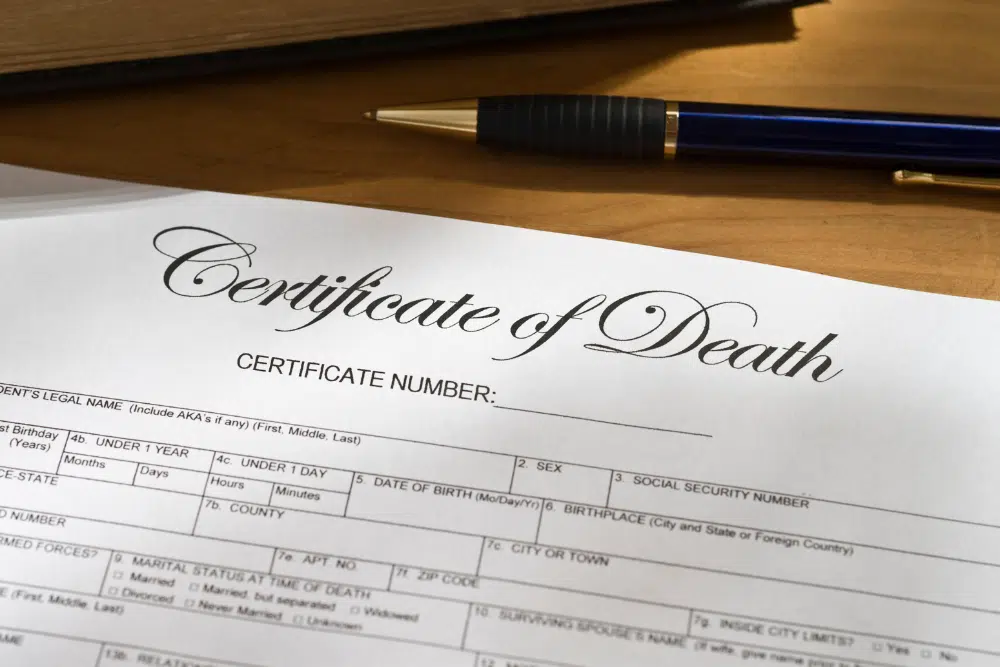
Content Reviewed by:
Michael F. Bonamarte, IV
Content Reviewed by: Michael F. Bonamarte, IV
Since 2005, Michael Bonamarte IV has been a passionate advocate for victims of negligent conduct, corporate malfeasance, and medical malpractice. He has won numerous awards and recognitions, including Best Lawyers in America and Super Lawyers’ Rising Star. He has presented for the American Association for Justice, the AAJ Nursing Home Litigation Group, the John Marshall Law School, and numerous other legal associations. He regularly lectures at Chicago-area aging organizations about nursing home abuse. His writings have been published by the American Bar Association, the Chicago Daily Bulletin, and numerous other prestigious publications.
One of the most important pieces of medical documentation used in countless different ways is a death certificate. At first glance, it might be easy to underestimate the importance of this piece of information. After all, the patient has already passed away, and nothing written in the certificate will change any of that. But the truth is that the death certificate has significant ramifications on survivors. From legal consequences and insurance details to widespread public policy data, the information in the death certificate impact various matters. For that reason, it is absolutely critical to get the information correct every time. But mistakes and confusion surrounding these records remain common.
The U.S. Centers for Disease Control and Prevention have guidelines regarding the basic information that must be included on all certificates. However, each state may collect that information in slightly differing ways. The certificates are occasionally updated, but the main information in them has remained unchanged for decades.
Doctors are usually responsible for adding information like date and time of death on top of “primary and secondary” causes of death. Depending on the complexity of the situation (and the doctor’s familiarity with the patient) these details may be filled out in haste–often inaccurately.
Doctor Error
A recent story in AMED News discusses the situation in detail. One doctor interviewed for the story explained that part of the problem is that medical professionals may not realize the significance. He explained, “Their duty doesn’t end when the patient dies. A lot of physicians when they’re signing a death certificate don’t realize that what they put down has some real, long-term ramifications.”
Those familiar with the situation argue that one concern is lack of medical education with filling out the forms. One doctor explained that the first time he ever saw a death certificate was when he was a resident-physician. He had to ask a colleague to help, because he had never filled one out before. This lack of training often leads to vague information being included or sometimes downright false information quickly added.
Considering that the death certificate plays a critical role in possible legal challenges–including medical malpractice–it is absolutely vital that this information be accurate. While mistakes are more common in patients who die at home (because doctors are less familiar with the immediate cause of death), the errors are still possible when a patient dies after a hospital stay.
Considering the complexity of these documentation details, if you suspect that your loved one may have been harmed as a result of medical malpractice, it is essential to obtain the help of an attorney with significant experience in this area. It is never an easy prospect to mount a legal challenge with a death certificate that contains inaccuracies. And in virtually no case with the certificate indicate “medical malpractice’ as the cause of death. Instead, it usually takes diligent work and significant legal pressure to ensure medical officials are open and honest about all causes that led to a passing.



